
Blog
Blog
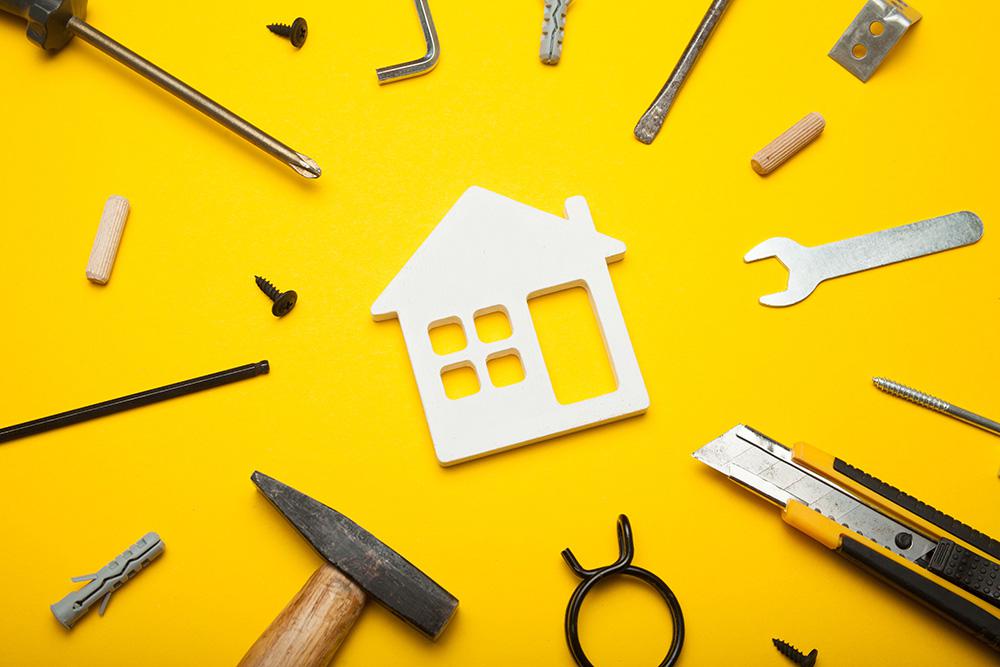
25 Oct, 2020
A good roof that lasts for decades starts with finding a high quality roofing manufacturer and a great roof installation team. These are essential elements to a healthy roof that can protect your home, but no roof will last its full lifespan without occasional maintenance. Fortunately, roofs don’t require as constant maintenance as perhaps your windows or the interior of your home, but there are a few residential roof maintenance tasks you’ll want to keep in mind. Do Roof Maintenance By Seasons You should do roof maintenance at least twice a year, but the smartest move is to do roof maintenance once per season. Seasonal storms and inclement weather can take its toll on your roof, and something that might not have been an issue one season ago could be an issue now. Make sure that at the beginning of each season, you check for missing or damaged shingles. It’s also a good time to clear out your roof gutters so that water can flow easily away from the roof instead of pooling or pouring down onto your foundation. Know What To Look For When inspecting for shingle damage, keep in mind that there might be several different kinds. The most obvious is missing shingles. Anyone can guess that missing shingles is a problem that could lead to leaks or other roofing issues. But curled shingles or chipped shingles could also be problematic. One issue that many homeowners miss is shingles that have begun shedding their granules. Check your roof gutters. If you notice that many granules have traveled to the base of the gutters, it means that your roof is losing the protection it needs. Roof Gutters Are Just As Important We’ve talked about cleaning your roof gutters seasonally and checking your roof gutters for granules from roofing shingles. But it’s critical to emphasize the importance of roof gutters when it comes to your roof system. Your roof gutters protect your roof and your home by funneling water off the surface of the roof and away from your siding or foundation, towards a downspout where it can flow away. Make sure that your gutters are both unclogged and that there aren’t any fatal scratches causing them to fail. Trim Nearby Trees Roof maintenance is more than just tending to the surface of your roof and your roof gutters. You should also look at what’s around the roof. Overhanging trees can scrape and damage your roof as well as your roof gutters. If you have a tree that’s hanging over your roof, trim it back to give both adequate space to flourish, without one damaging the other. Need help managing your roof or replacing your roof with a more durable, efficient roof? Contact Montgomery Winslow today for more information or a free estimate to get started.

10 Oct, 2020
In some neighborhoods, having an HOA is part of the cost that comes with your dream home. HOAs can be helpful in that they give you support as a homeowner, but they can also be quite restricting. Especially when it comes to remodeling, Homeowners Associations can be sticklers. Many homeowners have begun roofing projects ignorant of the consequences, only to find themselves in conflict with their HOA. Fortunately, the prickly issue can be navigated if you know the steps to take. Run It By Your HOA First Replacement roofs are not a project for which it helps to “act first, ask forgiveness later.” Often, scheduling roofing work without checking your HOA first will only lead to more conflict. That’s why it’s important to first check your HOA’s rules when it comes to roofing work. Once you’ve reviewed their standards, get approval from your HOA before scheduling your roofing work with a contractor. Fill Out All the Proper Forms (and Save Them) Chances are, getting approval for your roofing project will mean filling out many forms. This can be tedious, but it’s necessary in order to not get in trouble with your HOA over your roofing project. It might help to hire legal representation to go over all the forms and make sure they’re fair before you sign them. Once you’ve signed them, take pictures of the documents or scan or copy them for your own records. That way if the HOA loses your paperwork or tries to claim that you didn’t go through the proper channels, you have proof that you did. Does Your HOA Cover the Cost Of Your New Roof? As any homeowner in a Homeowners Association knows, HOAs charge a monthly fee. While this can be a pain when the statement comes in, it essentially works like insurance. That monthly fee allows the HOA to be able to cover costs to help maintain the community of homes and homeowners. The maintenance that the HOA will cover can vary, but often includes roof repair and roof replacement. Make sure you check your HOA guidelines before assuming that they will cover the cost of the roofing work, however. Montgomery Winslow has been serving the community for over 70 years, and we’ve worked with HOAs many times in our experience. We’re happy to answer any questions you might have and to work with your HOA to get you the roof you need. Contact us today for more information or a free estimate.
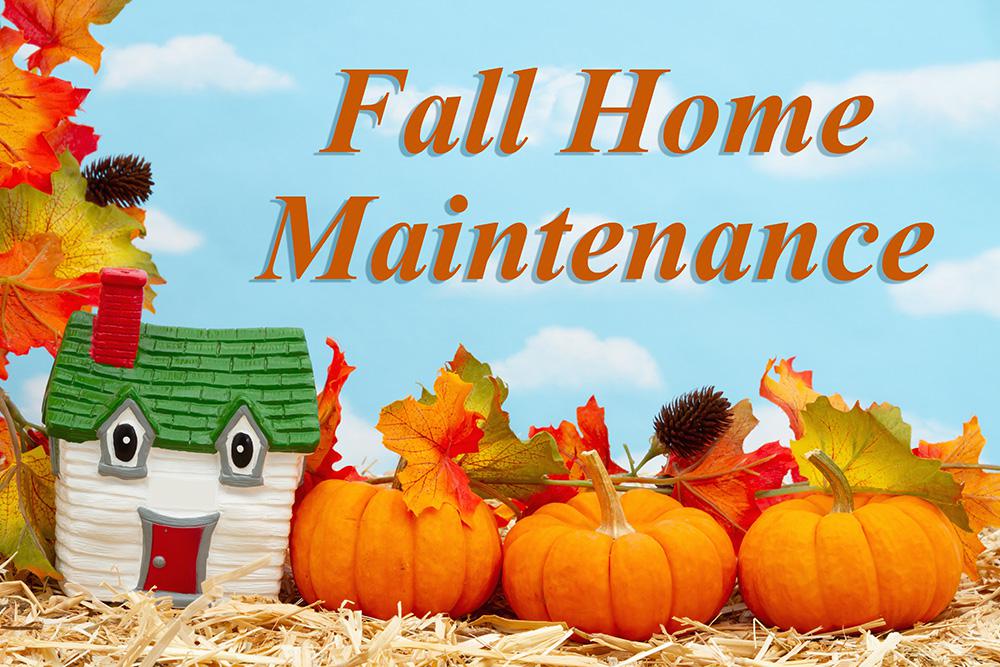
26 Sep, 2020
Fall is on its way, with cooler weather and changing leaves and soothing spiced drinks. But with fall comes the need for fall roofing maintenance. Your roof can be particularly vulnerable in the midst of autumn or winter storms or just in the cooler months in general. Fortunately, Montgomery Winslow has the roofing maintenance tips that you need to get through the season. Here is our fall roofing checklist: Gutters First and foremost, give some attention to your roof gutters. In the fall, roof gutters can become clogged with falling leaves and branches, which can make it difficult for water to reach them and be funneled away from the house. Water that isn’t able to go through your roof gutters will sit on the roof, causing weakened material and leaks or roof rot, or run off the side, potentially damaging the foundation of your home. Make sure to clear out your roof gutters so that there’s a clear and easy pathway. Debris Next, take a look at the surface of your roof. You’ll want to clear off any branches or other debris. While branches might seem small and harmless, they can chip away at the surface of the roof, causing leaks or damaged shingles. Debris will also likely slide down into your gutters, creating the need to clean them out again. It’s a good idea to clear off the debris that’s currently on your roof before moving on. Nearby Trees Want to avoid having that debris on your roof in the first place? Take a look at the trees near your house. Some might be a little too close to the roof, or have an overhanging canopy that scrapes down along the roof in the midst of a storm. While you likely won’t have to cut down the whole tree, now is a good time to trim overhanging branches to prevent any damage due to nearby trees. Flashing While you’re looking at your roof, check out the flashing. Flashing is thin sheet metal that surrounds openings in your roof, such as vents or skylights. If the flashing has come loose, that could be causing leaks in your roof. Now is a good time to make sure the flashing is secure and, if it’s not, secure it or replace it. Repairs While you’re doing roof maintenance, you may notice things like missing shingles, discoloration, or sagging in your roof. If you notice any of these signs, it’s a good idea to call a roofer to have them repaired right away, especially before we really settle into autumn and winter storms. Need to make repairs on your roof this fall to help it hold up efficiently throughout the cooler seasons? Montgomery Winslow can help. Contact us today for more information or a free estimate.
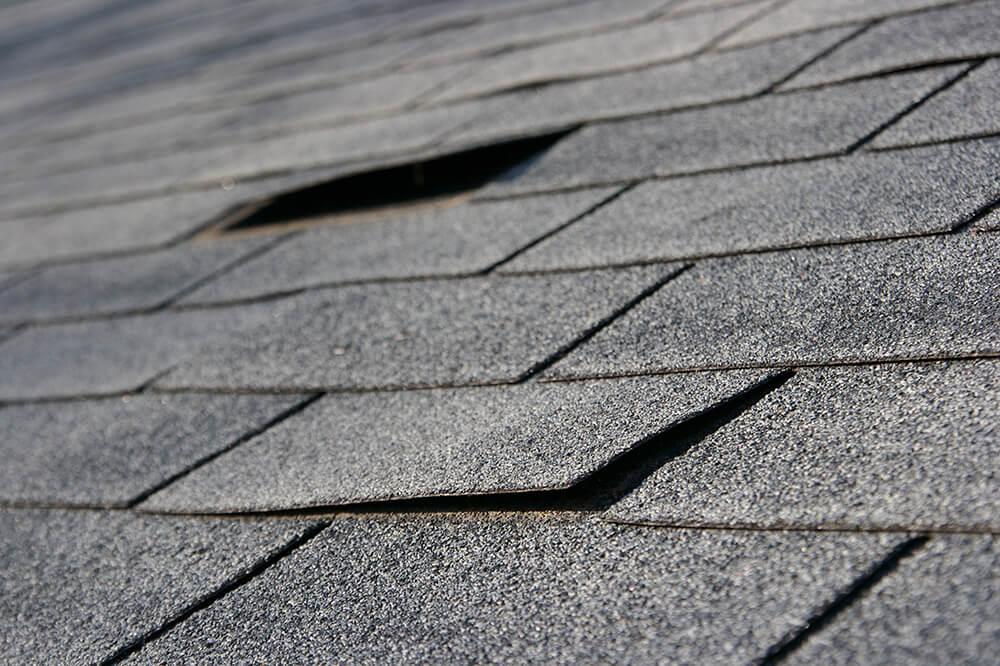
12 Sep, 2020
How do you know when your home needs roof repair, and what can you do about it? Most homeowners don’t spend a significant amount of time staring at their roofs. In fact, after a while of living in your home, you fail to often fail to notice your roof in the overall scheme of your house. It’s for this reason that many homeowners miss the signs when they need roof repair. But the signs are there, if you know what to look for. Want to make sure your roof stays in shape? Here are a few ways to know that you need roof repair: Damaged Shingles Roof shingles can be damaged in a number of ways, and you can often spot it even from the ground. It may be that your roof is missing shingles, or that certain shingles are cracked or curling. If you check your roof gutters, you may also notice black granules that have been shed from your roof. Asphalt shingles that have begun to shed granules will not be able to protect your home from leaks and water damage and should be repaired as soon as possible. Sagging or Discoloration Most roofs are slanted at a certain angle, but they’re done so by design. If your roof is sagging, that could speak to issues with the roof decking below or a weakness in the structure as a whole. Discoloration can also be a problem, often one that indicates roof rot. If you notice sagging or discoloration when it comes to your roof, you may need to replace the entire roof rather than simply having it repaired. Wear, Tear, and Loose Flashing Do you notice any general wear and tear to your roof? Don’t take for granted that these are simply signs of age. They’re still a good reason to have your roof repaired. In particular, look for wear and tear around roof openings such as skylights or vents. One issue might be loose roof flashing. Roof flashing is typically a thin sheet of metal wrapped around roof vents in order to prevent leaks. When these become old and worn down, they may come loose, making your roof more susceptible to leaks and roof rot. Whether you need your roof repaired or you need a full roof replacement, Montgomery Winslow is here to help. Contact us today to learn more about the signs you need roof repair or to schedule a free roof estimate.

29 Aug, 2020
Don’t fall for the lies of corner-cutting roof replacement companies. No one likes being lied to. Unfortunately, many Florida roof replacement companies will lie to their customers in order to cut corners and make the job easier for them. Some are simply trying to make their job easier while others may be fraudulent altogether. At Montgomery Winslow, we’ve heard it all from our customers, which is part of why we have such a strong commitment to honesty. Here are a few lies that other roofers tell so that you know what to watch out for: Lying About Their Licensing All Florida roof replacement professionals are required to have a roof contractor license and to have passed the Florida certification exam. However, some so-called roofers will lie about their license or certification. They may lie about being insured, which is one way that roof replacement companies protect you from liability during the roofing project. That’s why it’s important to not only ask if a roofer is licensed but to ask for proof of their license, and anything else they claim to have, such as insurance. Lying About Their Team Roofing contractors are roof replacement professionals that work with subcontractors for the roofing projects that they’re assigned, while roof replacement companies typically have their own in-house team. In some cases, roofing contractors work with the same subcontractors every time and know their team well. Some lacking roof replacement companies, might not have a thorough hiring process for their team. The important thing is honesty here. If a roofer lies about knowing their team well or working with them for years when in fact they just picked them up, that should be a red flag. Lying About When You Pay Florida residents are no stranger to extreme weather and storms. In some cases after a storm, fraudulent roofers will show up at your door offering a free roof inspection. Any roofer that gives off storm-chasing vibes should probably be avoided. In some cases, though, they’ll perform the roof inspection, tell you the work that needs to be done, and insist on being paid upfront. Often once paid upfront, these “roofers” will disappear and never be heard from again. Make sure to do your research on any roof replacement company before signing a contract with them to work on your home. Montgomery Winslow values clear and honest communication with our customers. Have a question for us? Contact us today for more information on your roofing project or our process.
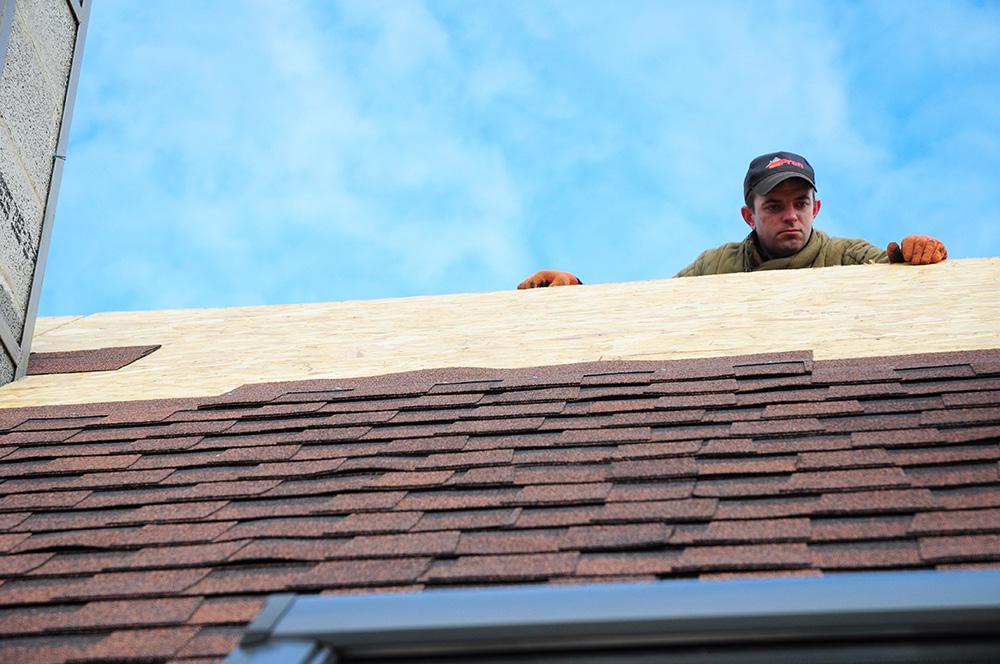
15 Aug, 2020
Reroofing vs. Roof Replacement — which is the right choice for you? When you hear the term “reroofing,” your first thought might be another term for roof replacement. While roof replacements and reroofing are similar processes, they’re not quite the same. Reroofing is in fact an alternative option to repair your roof. There are some cases where reroofing might be the right case and some in which roof replacement could be the best option. But is reroofing possible for your home? Which is the right choice for you? What Is Reroofing? Reroofing is the process of replacing the existing roof covering — typically asphalt shingles — with a new roof covering. In some cases, the roof material may be removed but in most cases If you have damaged roof shingles, for instance, you might consider reroofing as a way to repair your roof. Reroofing can help fortify your roof against roof leaks as well as recover a smoother overall look that boosts your curb appeal. However, the same benefits can be said for roof replacement. So what’s the real difference for your home? Reroofing vs. Roof Replacement Both reroofing and roof replacement are ways to update your roofing system and protect your home. However, roof replacement involves removing the entire roof covering and doing work on the roof substrate, like rotted decking before adding a new roof covering. Roof replacement is a more extensive process, and thus more costly. However, when it comes to major roofing issues, roof replacement may be the only recourse for your home. Roof replacement is also the best option if you want to change your roofing material altogether. But there are some instances in which reroofing is not only an option but the right option. Is Reroofing An Option For You? One of the first things to consider is building codes. In some areas, building codes don’t allow more than two roof coverings over a particular home. This only makes sense, as too many roof coverings stacked on top of each other would cease to make for a functional or safe roof. If your roof hasn’t been reroofed before, you’re probably safe to schedule a reroofing. Reroofing is a good option for small fixes, such as damaged roof covering or leaks, but not for underlying issues such as roof rot. Reroofing is also a good idea if you’re on a budget, as it requires less labor and therefore costs less than roof replacement. Ultimately, you’re the only one who can answer if reroofing is the right choice for you. Whether you need reroofing or roof replacement, though, Montgomery Winslow can help. Contact us today for more information or for a free estimate.

01 Aug, 2020
Spruce up your home this summer with this handy checklist. Summer is the perfect time of year to tackle those home maintenance projects you’ve been meaning to take care of all year. The days are never longer, the weather is sunnier, and the laid back nature of the season means you’ll have more time. The only question is where to start. Fortunately, we’ve got you covered with our summer maintenance checklist. Here are a few things you’ll want to knock out: Inspect Your House’s Roofing and Siding Winter and spring, with their extreme storms, can take a toll on your roof and siding. Summer is a great time to take a look at your roofing and siding to make sure nothing’s loose or rotted. If you don’t have any experience walking on the roof, you may want to call in a professional for a full inspection. However, from the ground, you may be able to notice missing shingles or discoloration that spells roof rot. When it comes to siding, look for areas where the wood might be softened or discolored, or areas where the siding might be pulling away from the wall. Clean Your Grill What’s summer without at least one good barbeque? Summer is the perfect season for dinner by the grill, but if you haven’t used your grill since last year, it’s time for a thorough cleaning. If you have a charcoal grill, empty it of any charcoal residue and tackle the inside and outside of the grill with hot water and dish soap. With a gas grill, first you’ll want to close the lid, turn the heat on high, and allow it to “cook” for half an hour. Once that’s done and the grill is cooled, brush the grill down, clean the outside with a cleaner and sponge or rag, and empty the drip trays. Then you’re ready to grill! Sweep Off the Porch, Deck, Or Patio In summer, you’ll probably want to take advantage of your outdoor spaces. Now is the time to sweep off your porch, deck, or patio, as well as any outdoor furniture that might be there. The porch can be scrubbed down with cleaner, and the deck might need to be re-stained, depending on the shape of it. If you have a cement patio, hosing it down with water might be the solution. Wash Your Windows Let that beautiful sunshine into your home! Summer is a great time of year to wash your windows so you can take full advantage of the weather. Use gentle, non-abrasive cleaner and a microfibre cloth to wipe down both the inside and outside, as well as the frame. Then enjoy the view. Add Mulch to the Garden Tired of weeds and dry plants in your garden? Add a layer of mulch. This will help to keep moisture in, as well as reduce the risk of weeds. Your garden should flourish this summer, offering you beautiful sights or tasty herbs or both, depending on the type of garden you have. Clear Your Roof Gutters Good roof gutters are essential to roof health. Make sure to clear out any leaves, sticks, or other debris that might be clogging your gutters and keeping water from being funneled through them. You may want to invest in gutter guards to help keep debris out while allowing water in. Has your summer home maintenance exposed an issue with your roof? Let Montgomery Winslow help, with an inspection, repair, or even a replacement roof. Contact us today for more information or a free estimate.
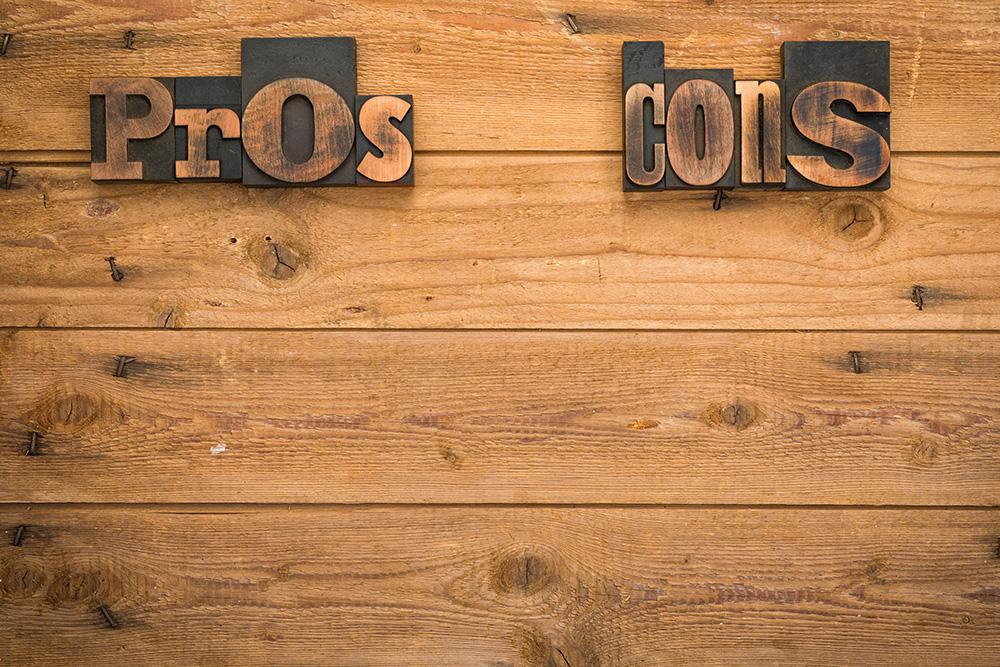
18 Jul, 2020
It’s easy to know that you need a new roof. Maybe you’re having a house built completely new construction, or maybe you have an old roof that needs to be replaced. The more complicated question is what kind of roof you want to have installed. There are so many options on today’s roofing market, and each offers their own advantages and disadvantages. Here are the pros and cons of different types of roofing. Asphalt Shingles Pros: The biggest advantage of asphalt shingles is that they’re affordable. These are the most affordable roofs on the market. They’re also among the most common, so if you want your house to blend in with the neighborhood, asphalt shingles are perfect. They’re easy to install, as well. Cons: Asphalt shingles are the most affordable option because they tend to have the shortest lifespan. They do the least to block heat, and they very easily chip, crack, or curl. They can also be vulnerable to mold or mildew if they’re not maintained well. Ultimately, you may be paying more longterm to keep or replace this roof than you would for other roofs, which lessens the affordability. Clay Tile Pros: You’ve probably seen red clay tile roofs on traditional Spanish style homes, paired with white stucco walls and dark wooden doors. Clay tile roofs are not only stylish, but they retain less heat than other styles, which makes them a great option for Florida homes. They’re low maintenance and durable, so they’ll require little work from you. They resist rot, burn, and bugs. The curve of the tiles makes for great ventilation opportunities. Cons: However, this is an expensive option that might not fit into everyone’s budget. It’s heavy, so your home’s structure would need to be sturdy and able to carry large weights. They’re also a tricky combination of difficult to install and easily breakable, both over the course of the installation and in the midst of storms. Concrete Tile Pros: Looking for a low maintenance, durable, and fire resistant option? Concrete tile roofs can offer that, while taking on the look of some of your favorite other roofing styles such as shingles, clay tile, or wood shakes. It sustains strong winds better than other roofing materials, as well. Cons: Concrete tile is an expensive roofing material, and it’s heavy, which makes for difficult installation. It also absorbs more water than clay tile and metal roofing. Laminated Fiberglass Shingles Pros: Laminated fiberglass looks similar to asphalt shingles, so you can enjoy that classic look, but it’s more durable than asphalt. It comes in a wide variety of colors, requires little maintenance, and it has a Class A Fire Protection, making it fire resistant. Best of all, it’s an affordable option for someone on a budget. Cons: Laminated fiberglass shingles are not made to resist heat in the same way that metal roofs or clay tile roofs are, so they’re not the most energy efficient option. While they are more durable than asphalt shingles, they’re still less durable than clay or metal, and you do have to watch out for damaged shingles. Metal Pros: Metal roofing is becoming increasingly more popular for residential properties. It’s available in the form of shakes or vertical panels. It comes in any number of vibrant colors, resists fire as well as rot and impact, and it requires almost no maintenance. It resists heat, too, making it one of the most energy efficient options. Unlike clay tile, however, metal roofs are lightweight and easy to install. Cons: The upfront price is about 50% more than some other types of roofs, so without financing, it’s not a great budget option, though it’s likely to save you money in the long run. Noise can also be an issue, and it’s the sort of roofing style that primarily works for modern home styles rather than traditional. Ultimately, it comes down to your personal needs and to the right roofing contractor. Contact Montgomery Winslow today for more information or for a free estimate on your next roof.
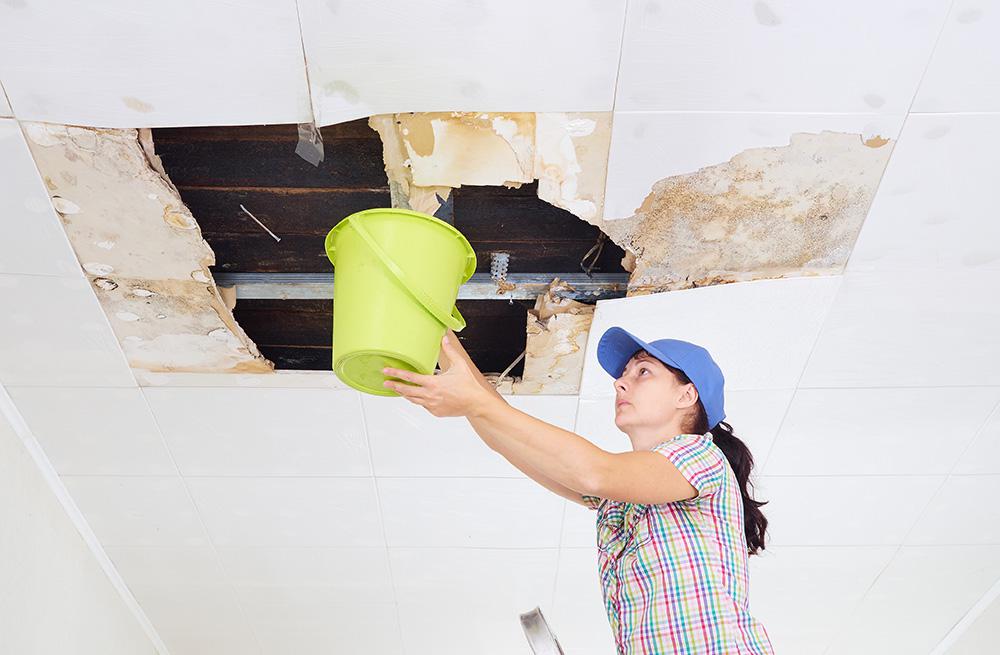
04 Jul, 2020
Ideally, homeowners would love not to be bothered with roof leaks at all. However, if your roof does spring a leak, it's best to catch it early and before too much damage is done to the structure or interior of your home. Unfortunately, many homeowners don't know what to look for and might not notice a leak until they see water stains in the ceiling or notice mold and mildew growth. Here are a few ways you can catch a roof leak early and before too much damage is done. Check the Attic Rather than starting with the exterior of your roof, start with your attic. Wait for a sunny day and then climb up to the attic and look at the roof. If you notice cracks of light peeking through, then you know you have an issue with roof leaks. This is where the leak is likely to show first, so make sure to do this after major storms and such to keep an eye on the state of your roof. If you notice a leak, contact a roofer right away to help repair it. Look at the Shingles Next, take a look at the exterior of your roof. Do you notice missing shingles, or shingles that are chipped? This could mean your roof has a leak or, at the very least, that it's more vulnerable to leaks. If you notice curled shingles, this could be a sign that water damage is already occurring. You may also notice that there's debris in your gutters or downspouts from your shingles, which could also spell an issue with leaks to your roof. Tamp Down the Flashing Roof flashing is used around vents and chimneys to help keep them sealed and prevent leaks. However, flashing is made up of sheet metal that could potentially become worn and loose in the midst of a heavy storm. If your flashing has come loose or is missing, that could be ground zero for a roof leak. Make sure to tamp this down and then check the attic or check for other signs of a roof leak before it begins to affect the interior of your home. Worried you might have a roof leak? Montgomery Winslow can help. Contact us today for more information or a free quote for your next roofing project.


